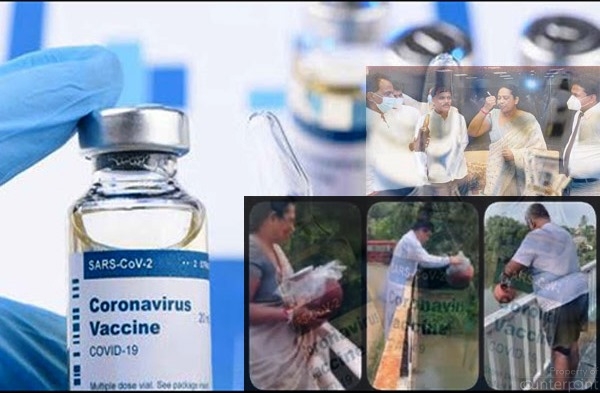By SARASI WIJERATNE
Soon after the first wave of Covid -19 hit Sri Lanka, stocks of turmeric ran out and prices became astronomical. The fate of ginger root, which like turmeric doubles up as an ingredient in traditional medicine and as a spice, nearly followed suit. They were touted as cleansers and immunity boosting remedies which could ward off the virus. So is there a science behind the myth?
Science is the bedrock of western medicine. New forms of treatment have to be tested in laboratories and tried on animals before they are used on patients. But before that the US based Food and Drug Administration has to approve it for safety and efficacy. Although the FDA’s jurisdiction is only in the USA and other countries and regions have their own regulatory bodies like the National Medicines Regulatory Authority of Sri Lanka, many are guided by the FDA because of its standards and track record. These regulatory measures had to be put in place following the Thalidomide debacle of the 1960s. The drug, which was given to stop nausea and to sedate pregnant mothers, was found to cause birth defects in the foetus. In limited cases, like terminally ill patients for whom there is no hope of living, a treatment which has not passed these two hurdles can be given but that too with the consent of the patient.
“People can make two types of claims”, says Panduka Karunanayake, professor in the Department of Clinical Medicine in the University of Colombo. “The first is that a treatment is good for a myriad of general health effects such as boosting memory or immunity or a plethora of other benefits. The other claim is that a medicine is safe and efficacious to treat a specific condition such as diabetes or asthma and achieves a longer or better quality of life. In the case of the first claim it is up to a person to take the treatment or not because neither safety or efficacy is proven”.
If this were to be applied to Vitamin D which is consistently mooted as an immune booster, while there might be some scientific evidence that some aspect of it is good it has not been conclusively proven so far. What happens is during lab testing it will pass the threshold but when it is in the human body it can behave differently. The jury is still out on Vitamin D.
The pharmaceutical business, like any other, feeds off people’s vulnerabilities as they search for a better quality of life. Some pharmaceutical companies take a claim, combine it with the consumer fantasy and market it. Karunanayake calls this pseudo -science.
Steam inhalation which also became popular with Covid-19 can be done cheaply but its effects can be damaging. Karunanayake cautions about assuming that natural things are safe. “Steam inhalation for one is done at a higher temperature than normal and it can cause inflammation of the tissue in the nose and throat unless it is done according to expert advice. Because it won’t be felt immediately but a day or so later people won’t connect the two’.
The anthropology of medicine begins with the supernatural and a gradual progression to natural remedies like ayurveda. The scientific explanation is the final frontier. In this case, Dhammika paniya, the concoction that Dhammika Bandara made according to a god given recipe can only be a regression. Yet, thousands of people queued up at Dhammika’s front door in Kegalle for a swig of what they believed was their elixir.
Retired ayurvedic practitioner Dr Leela Ramanayake is categorical about the status of Dhammika paniya in the ayurvedic pharmacopia. ‘There is no paniya in ayurveda medicine which uses only pure bee’s honey. Turmeric is used to reduce phlegm and ginger and coriander are used to treat colds’.
“People have this existential fear of falling ill, that they will die. To get over it they have to believe in something, even the supernatural”, says Karunanayake.
According to another medical practitioner claims about ginger, coriander and alkaline foods, which in any event cannot alter the body’s pH value as it is tightly regulated between 7.36 and 7.44, have no basis in science. “All these give false hopes to people who face a problem for which they have no solution in the foreseeable future. The chanting of pirith is another bogus cure”.
Until a vaccine is out the best preventive measures to take are to wear a mask at all times, hand sanitizing and social distancing.
“The vaccine will boost morale. When coverage is above 70 percent we will have sufficient herd immunity to reduce transmission to very low levels”.
Dr Ramanayake who used to be the Director at the Ayurveda Research Institute in Nawinna is concerned that the Ayurveda Department has not updated its pharmacopia.
Any new ayurveda medicine has to be legitimized before it hits the shelfs and the consumer. It has to go before a research committee in the Ayurveda department, approved by them and then entered into the pharmacopia before it can be legalized.





